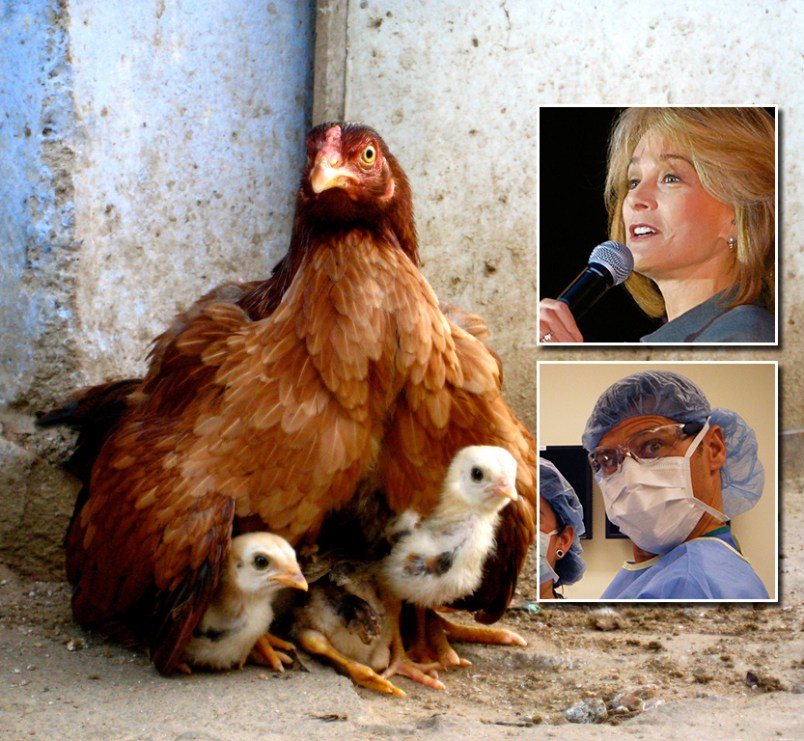So with all the discussion surrounding Nevada Senate candidate Sue Lowden’s idea to use bartering as a way to pay for health care, we thought we’d take a look at whether the idea would actually work. Since Lowden, a Republican, touted the fact that her grandparents’ generation would bring a chicken to the doctor for payment, we decided to look at whether the math would work for a chicken-based health care economy. The answer? Absolutely Not. There aren’t enough chickens in the world — let alone the United States — to cover the costs of health care in this country alone.
The numbers on chicken economics, right after the jump.
Total U.S. health care costs in 2008: $2.3 trillion
US population: About 300 million
Average cost of health care per person: $7,681
Average weight of a chicken: 5.9 lbs
Market price per pound: 85 cents
Average spot price per chicken: $5.02
Average number of chickens per resident needed to cover health care costs: 1,530 chickens
Total number of chickens needed to cover United States health care costs: 459 billion chickens
Estimated worldwide chicken population: 16 billion chickens
Current worldwide chicken shortage to cover U.S. health care: 443 billion cluckers
Of course, it should be noted that chickens are only one of many commodities, and are thus only one component of a barter economy — for example, Tennessee state Rep. Mike Bell (R) has referred to Mennonites paying for health care with vegetables. There are also the options of beef, pork, turkeys, sugar, metal ore, or even finished products like iPods or gasoline. What would really help here is if there were some kind of single, universally accepted commodity, which could be used as a medium of exchange for all the others…
(Hat tip to TPM reader EH, for inspiring us to look up the numbers and do all this math.)









